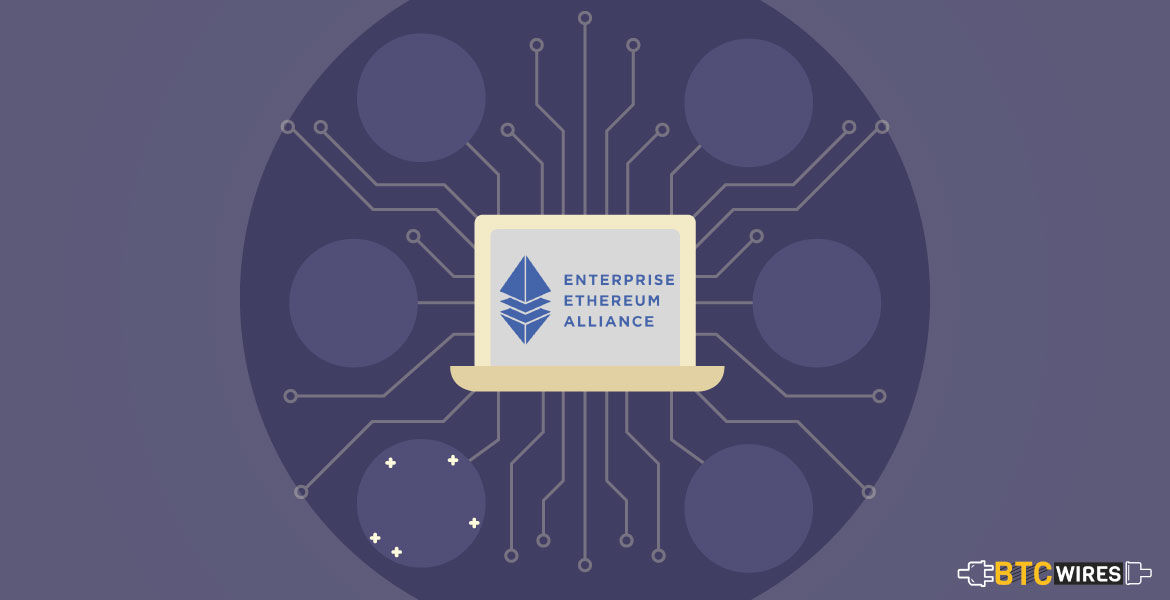Alliances like the Enterprise Ethereum Alliance are important groupings of

Alliances like the Enterprise Ethereum Alliance are important groupings of industry players that will help smooth ethereum’s road to widespread adoption.
Ethereum’s worldwide acceptance has been gradual but steady and though its technology is still in a nascent stage and will have to overcome several roadblocks, and provide a solution to the issues of its prices dropping before it becomes fully functional for business dealings.
The Ethereum Enterprise Alliance (EEA) is a start. The alliance is an effort to customize ethereum for industry players. It has an aims to “define enterprise-grade software capable of handling the most complex, highly demanding applications at the speed of business.”
You May Also Read: Best Altcoins To Invest In 2019
Members of this alliance:
Its members are an eclectic mix of large and established organizations in their respective industries as well as startups.
- JP Morgan Chase, Santander, Scotiabank (bank)
- Bank of Canada (central bank)
- Microsoft, Samsung, Intel (technology)
- Shell, BP (oil & gas)
- Consensys, Accenture (consulting)
- Mastercard (payments)
- Deloitte (accounting)
- Thomson Reuters (media)
According to a Fortune piece, the alliance’s partners will help develop foundations for use cases within several industries, such as post-trade settlement and supply-chain tracking.
What is EEA all about?
The Enterprise Ethereum Alliance (EEA) is a non-profit corporation that was in March 2017. It came to be introduced aso the largest open-source initiative that seeks to bring the Ethereum blockchain to governments and large companies.
Today, the group has spread its wings and expanded to more than 500 members, including the “whos-who” in industries like banking, tech, the blockchain, and research.
The major aim of the EEA is to supply a proper roadmap that distinguishes the enterprise features and offer resources that will allow businesses to quickly learn about Ethereum. The group hopes to connect Fortune 500 companies, academics, and blockchain startups with blockchain industry experts.
To make it easier for businesses to leverage Ethereum’s blockchain technology in addressing given industry use cases is one of the primary concerns of the alliance.
You May Also Read: How to Buy Ethereum
One notable detail is that the EEA is aimed at “private” corporations that may have had problems in using the public open-source Ethereum technology. However, the group utilizes public features alongside a private network. It brings out interoperability, meaning that dApps developed on the public network can run on a private network like JP Morgan’s Quorum.
According to EEA executive director Ron Resnick:
“Even if it’s a private network, that network can actually connect to the [public ethereum] mainnet – which a lot of folks want to do.
As explained above, the EEA would like to see more and more industrial use cases being employed on the Ethereum network. The real appeal of the 2nd crypto’s network lies in its utility.
It’s important that the EEA has developed a framework that campaigns to see uniformity in industry-wide governance for all enterprises seeking to use the platform. It thus is a positive initiative for the adoption and implementation of smart contracts.
The platform allows for the use of the ledger for the creation of decentralized applications (apps) as well as the deployment and execution of smart contracts.
Basically, the EEA has the potential to attract more businesses to the public blockchain. In turn, we can assume ETH will gain a lot in terms of value.
The EEA provides the Ethereum blockchain legitimacy. It instills confidence in corporations and businesses. You only need to look at giants like J.P Morgan and Microsoft to know that Ethereum has support. They may not support the use of ETH as an investment tool, but they are promoting the technology. That’s why these sentiments will boost the coin’s value.
The EEA is also an important aspect for the Ethereum community to learn from companies and firms that have experience dealing with governments around the world. In essence, it helps give the platform a presence in an era of regulatory concerns.
You May Also Read: 10 Differences Between Ethereum and Ethereum Classic
They have developed an architecture stack comprising five layers:
The base layer which consists of a peer-to-peer (p2p) network protocol layer. The next one is the core blockchain layer. This is responsible for consensus, execution of transactions, and data storage. This will involve both on-chain and off-chain solutions. The third layer is the privacy and scalability layer.
The fourth stack consists of the tooling layer. This one will handle aspects like permissions and oracles. Lastly, there’s the application layer. It’s a milestone that once achieved, will benefit the public Ethereum blockchain as many developers see a lot of potential in the public chain.
Ethereum (ETH) remains an open-source decentralized cryptocurrency. it’s not run by the Enterprise Ethereum Alliance, but the EEA continues to play a big role in its development.
Basically, the EEA has the potential to attract more businesses to the public blockchain. In turn, we can assume ETH will gain a lot in terms of value.
Here are a Few Articles for you to Read Next:

